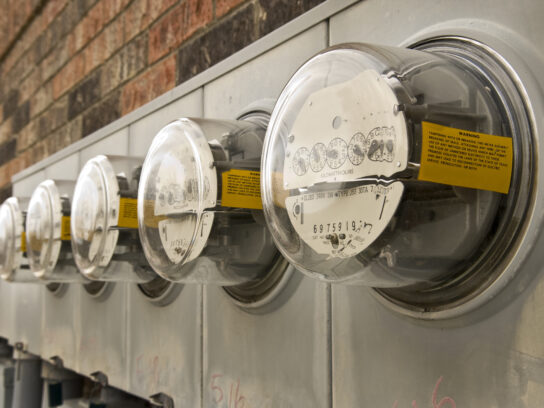
This year Marylanders saw their energy bills jump by hundreds of dollars. Beginning January 1, BGE raised average residential gas bills by 9% and electric bills by 7%. Starting this month BGE customers could see roughly $40 more on their highest bill. Pepco customers will also face another rate increase, adding approximately $20 to monthly bills.
Retail energy supply companies are dropping Maryland customers’ contracts while Marylanders expect another spike in their utility bill.
Why Are Utility Costs Rising?
Utility companies cite several reasons for this increase, including constraints to the energy grid—which Maryland shares with 12 other states—by AI technologies and data centers, and outdated infrastructure.
Some Maryland officials also accuse energy grid operator PJM Interconnection of driving rates higher by inflating prices at last year’s capacity auction.
Potomac Edison’s parent company First Energy said in an email that its typical Maryland customer will see a $6.49 increase starting June 1, mostly due to higher PJM prices.
However, as rates rise, many Marylanders are finding it harder to find alternatives because of new state regulations.
New Law Reduces Energy Supplier Options
Earlier this year the Maryland Commission of Public Service announced that people will see less choice in retail energy suppliers because of the reforms generated by Senate Bill 1 (SB1) passed in last year’s General Assembly.
Retail energy companies have pushed back against the legislation.
Travis Kavulla, vice president of regulatory affairs at NRG Energy and a Hyattsville resident, said that SB1 will “permanently end customer choice” and return the market to utility monopolies.
Fall Out from SB1
Chris Ercoli, president and CEO of the Retail Energy Advancement League, said many suppliers are already leaving the market. “The competitive energy market is now barren, with zero offers for customers to choose from,” Ercoli said in an email statement. “We expect nearly all customers to be returned to their utility by year’s end.”
The Maryland Public Service Commission confirmed the decline. Of roughly 100 expiring supplier licenses this year, only about 60 have applied for renewal.
The Maryland Public Service Commission cited SB1 ending “purchase of receivables” as a main factor in an email. The purchase of receivables mechanism allowed the risk of a retail customer’s nonpayment to shift from the supplier to a utility. Without that safety net, many suppliers are now limiting their offerings to commercial customers or leaving the residential market altogether.
SB1, also known as the Electricity and Gas – Retail Supply – Regulation and Consumer Protection bill, passed last year and tightened rules on retail energy suppliers to combat deceptive marketing and predatory pricing. The law took effect this year.
What SB1 Aims to Fix
State Sen. Malcolm Augustine (D-Prince George’s), SB1’s sponsor, said in an interview with MCM the law is doing what it was meant to do: eliminating suppliers who weren’t saving consumers money.
“If they had been saving people money over the standard utility rates, there would be no issue,” Augustine said.
Augustine added that some suppliers were charging well above market rates while using misleading claims in clean energy marketing. He said the law requires clearer labeling of “clean energy” offers, ensuring suppliers accurately represent the environmental value of Renewable Energy Certificates (RECs).
“You just have to tell people what they’re actually buying,” Augustine said.
Stan Edwards, manager of Montgomery County’s Energy, Climate and Compliance Division, said while he supports SB1’s consumer protections, he acknowledged that the sudden loss of supplier options may have had unintended consequences.
“I think a lot of this is still playing out, because SB 1 was only passed in the 2024 session, and all of last year the Public Service Commission was working on the rules that would apply to electricity suppliers,” he said in an interview with MCM.
Relief Efforts for Marylanders
State regulators and lawmakers are taking steps in an effort to help residents manage rising costs.
On Friday, the Maryland Commission of Public Service ordered BGE and Delmarva Power to shift recovery of some supply costs to the fall and spring, when usage is typically lower. Additionally, the energy package that came out of this year’s General Assembly includes a Legislative Energy Relief Refund, offering two $40 payments to customers next summer and winter.
Augustine said that the payments are a short-term solution, but legislators want longer term solutions to generate more energy in Maryland, including building a framework that would enable the use of nuclear power over time.
Meanwhile, Edwards urged residents to take advantage of energy-saving programs.
Maryland’s EmPOWER program offers rebates and incentives for upgrades like energy-efficient heating and cooling systems, he said.
“Every kilowatt hour that you pay for on your electricity bill contains a small piece of this EmPOWER Maryland charge, which you can then get back by installing a more efficient heating and air conditioning system,” Edwards said. “So not only does that reduce the cost of the system, but over the long run, you use less electricity, and so that lowers your bills.”
Edwards said residents can also contact Montgomery Energy Connection for help with bill payment resources and energy assistance.


Comments are closed.